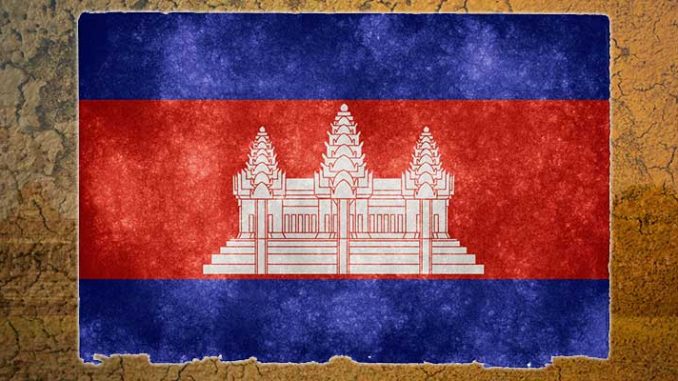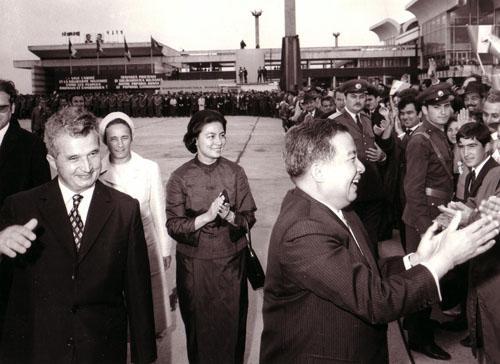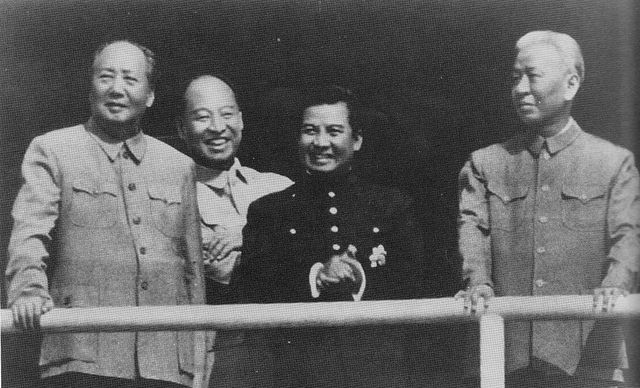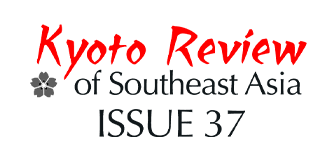
The Future of Monarchy in Cambodia 1
Traditional Southeast Asian monarchies, whether deriving from Hindu-Buddhist or Islamic traditions, have been either eliminated or maintained by major colonial powers. The most powerful ones like the Burmese were destroyed, while the rest had to adjust for survival, including the Siamese. The last Burmese king, Thibaw (reigning from 1 October 1878–29 November 1885), was sent into exile outside Bombay while the last Mughal emperor of India, Bahadur Shah Zafar, (reigning from 28 September 1837–14 September1857), was sent to die in Yangon. A good number of kings or petit kings were preserved for ceremonial functions and for aiding the colonial masters, such as the Indonesian (Javanese and Balinese), Malay, Tai/Shan, Vietnamese, Lao and Khmer.
With the arrival of Japanese colonialism and eventually the end of World War II, a new period began. Leftover Southeast Asian monarchs had to choose between being active or otherwise in their new ‘patriotic-nationalist’ environments. Most of them were conservatively subservient to their old masters, like the Vietnamese, Indonesian (with some exception in the case of the Yogya sultan), the Shan sawbuas, the Laotians (with some exception of a few Lao Chao), and the Malay sultans. The junior Thai king, Rama VIII, and his brother, the future Rama IX, were fortunately residing in neutral Switzerland throughout the war period. In effect, the case of the Khmer king, Norodom Sihanouk (1922-2012), was rather uncommon. Today, there are 27 monarchical countries among the 193 members of the United Nations (or about 13 percent).
Writing in 2001, a decade prior to Sihanouk’s death, Roger Kershaw, a British academic, imparted this worrying note:
Nevertheless, we should probably conclude, tentatively, that the Cambodian monarchy has little chance of a prolonged existence after Sihanouk…no successor will be able to offer the same combination of legitimizing personal prestige and lubricating political finesse (infused and informed by self-interest!) to Hun Sen or his successors. The Cambodian throne is ‘a space to watch’ – with the brooding expectation of a permanent vacancy before very long.
The British academic was probably right to say that none could match nor replace the towering figure of Sihanouk who, as he termed, was “the King with nine lives”:
- A young protégé of the French (1941-45);
- An “absolute” monarch under the Japanese tutelage (1945);
- A semi-constitution monarch, again, under the French (1946-52);
- The King who won independence (1952-54);
- An absolutist who abdicated and established his own political party (1954-55);
- A populist/autocratic/non-aligned leader/Head of State (1950-70);
- A leader of FUNK: Front Uni National du Kampuchea; Head of State of Democratic Kampuchea/with the Khmer Rouge (1970-75-79);
- A savior of the nation vis-a-vis the Khmer Rouge and the Vietnamese (1979-89-93);
- King, again, from 1993 until his second abdication on 15 October 2004, then becoming the King Father until 2012.
As one can see from the above nine political incarnations of the 71-year king, Sihanouk was indeed an extraordinary “little big” man. To his nation, he was the King and father who appeared to be a traditional dharma/devaraja and a “modern” monarch at the same time. To Southeast Asia, he was a gigantic figure like those in the generation of Sukarno and Ho Chi Minh. They were caught in the chaotic post-WW II period and had to stand up during the destructive Cold War time. Sihanouk had to play a role for his survival within domestic politics and at the same time was faced with the two major world camps: the Soviet Union-Red China-North Vietnam on one side, the United States and its allies on the other. He was as much to the dislike of the Americans and their allies as he was to the Thais and South Vietnamese. He and his country were sandwiched between the east and the west. And one must remember that, in 1970, he was overthrown by the Khmer military led by Lon Nol which was aided by the Americans and the Thais. Monarchy ceased to exist and Cambodia became a republic or anything non-monarchical for 23 years until 1993.

Judging from Sihanouk’s decades of up and down career as King, with two terms and two abdications, head of state, premier, nominal “guerrilla” leader, and lastly “Preah Karuna Preah Bat Samdech Preah Norodom Sihanouk”, implying his Bodhisattva-like statue, one may say that he had built up enormous baaramey which helped him survive, for a lengthy period, in a rather hostile domestic political environment. This strengthened his position in international politics and in his effort for reconciliation settlement. Baaramey is a Khmer Buddhist concept meaning “reserve powers”. Culturally, this term can refer to someone who has virtue, power or goodness, i.e. king, monk, sacred individuals or things, famous people or individuals whom majority of people respect and bow to. When one belongs to a certain class, i.e. king, one is inherently or born with it. But more importantly, one has to accumulate the baaramey by oneself. This is to earn the respect from others. Baaramey belongs to a certain individual and it is non transferable. The Kotama Buddha had to spend 500 repeatedly born-again-and-again lives accumulating enough baaramey in order to attain nirvana. Needless to say, that Sihanouk’s baaramey was very much for the nation and his own “present” life, not for the religion per se, or for attaining a Buddhahood.
Of all the great Angkorian kings, Preah Bat Jayavarman VII (reigning from 1181-1218) was known to be a devout Buddhist; he built a good number of “hospitals” (arokayasala), bridges (sapian), temples (prasat), plus defending his kingdom against the Cham enemy. Jayavarman VII’s reputation was heard and his statue was sent out to be seen throughout his kingdom, parts of which now lay in southern Vietnam, Laos, and Thailand (there is one big statue, a likeness of Jayavarman VII at Prasat Phimai, northeast Thailand). Nevertheless, the populace would have had no chance to see King Jayavarman VII in person. But, in the case of Sihanouk, as former Cambodian ambassador Pou Sothirak has said, “[the king] travelled across the country to speak to the peasants, to articulate nationalistic ideas and develop a version of Cambodia free from French rulers. The speeches were so effective that Norodom Sihanouk became the most respected leader—an advocate of liberty and national independence”. 2 Visiting, mixing and touching the common people while opening schools, hospitals, temples, bridges, roads, were something new in Cambodia. It was even more so when these were performed outside Phnom Penh. This was unthinkable in the pre or post Angkorian eras. In modern time and with modern technology—car, train, helicopter, radio, television, films, and later on, the internet, Sihanouk was probably the first King who could have direct contact with his subjects at large. Sihanouk himself produced, directed, and partly acted in his some 30 films and documentaries. All of these added to his immense baaramey accumulation.
With this baaramey concept attached to the personality of Sihanouk, we can assume that his successor, King Sihamoni and the Khmer monarchy will face some immense difficulty. Can the new King build up his own baaramey and at the same time, sustain the monarchy? Most observers think that the Khmer monarchy, like elsewhere in Southeast Asia, has not been institutionalized. It is not the same like that of Great Britain and Western Europe. There, monarchs are “above politics” and secured. Therefore, the future of monarchy in Cambodia is bleak.
In Theravada Buddhist Cambodia, Laos and Thailand as well, baaramey could decline and run out. This can happen because of one’s misconduct. In a plain Khmer word, it is bat baaramey. Bat means to lose, to ruin (like losing face or losing dignity)—or baaramey is diminishing and gone. What was very interesting about King Sihanouk was that he performed as King for two terms; his first term was from 25 April 1941–2 March 1955, and his second from 24 September 1993–7 October 2004. As for abdications, the first one, in 1955, was when he entered politics in full; the second, in 2004, was to be out and “above politics”. He was aged 33 and 82 respectively.

After the abdication, Sihanouk was outside of Cambodia, residing mostly in China with his well-seasoned queen, Monineath (formerly Paule-Monique Izzi, née 18 June 1936, a beauty of French-Italian-Khmer descent; she married the King in 1952, at the age of 16, and had two sons with him). Sihanouk had several wives and 15 children. Because of his health, Sihanouk had been 8 years away from politics until his death. One can say that he departed when his baaramey was at its height, i.e. it was not bat. One can also argue that an abdication is a good solution for him and the Khmer monarchy. In short, even though Sihamoni may not inherit his father’s baaramey, he can practically lean on it.
Interestingly, the Cambodian case seems rather similar to the tiny kingdom of Bhutan where, in 2006, the former king, Jigme Singye, aged 61, abdicated for his young son, Jigme Khesar Namgyel, aged 26. The former king was known for his many modern reforms and he was still popular and would be able to stay around to assist his son. Meanwhile, when he became a bachelor king at the age of 51, Sihamoni had had much “protection” from his popular parents. He has seemed to be content with his figurehead and ceremonial roles, rather unlike his father. It is interesting to see that in many offices, shops, public places in Cambodia, there are always three framed pictures, those of Sihanouk, Monineath, and Sihamoni hanging together.
Cambodian monarchy may not be institutionalized like the world class British and Western European versions, but abdication seemed to solve the problems associated with the monarchy in the past. Therefore, this is not the case of “the King is dead—Long live the king.”
Charnvit Kasetsiri
Thammasat University, Thailand
Kyoto Review of Southeast Asia. Issue 13 (March 2013). Monarchies in Southeast Asia
References
Chandler, David. 1997. From ‘Cambodge’ to Kampuchea: State and Revolution in Cambodia, 1863-1979. Thesis Eleven 50, pp. 35-49.
Edwards, Penny. 2008. Cambodge: The Cultivation of A Nation: 1860-1945. Honolulu: University of Hawaii Press.
Kershaw, Roger. 2001. Monarchy in South-East Asia: The faces of tradition in transition. London/ New York: Routledge.
Remembering the King Norodom Sihanouk, 1922-2012. 2012. The Cambodia Daily. 31 Oct 2012. pp. 1-24.
Notes:
- The author would like to express his thanks for suggestions and information from Benedict Anderson, Chhany Sak-Humphry, Philippe Peycam, Phra Lah, Chap Prem, Theara Thun, Thongchai Winichakul, for the preparation of this article. Thanks to Caroline Hau and Pavin Chachavalpongpun for getting him across the Thai border to the other side. ↩
- Interview with Pou Sothirak, 31 October 2012. ↩
